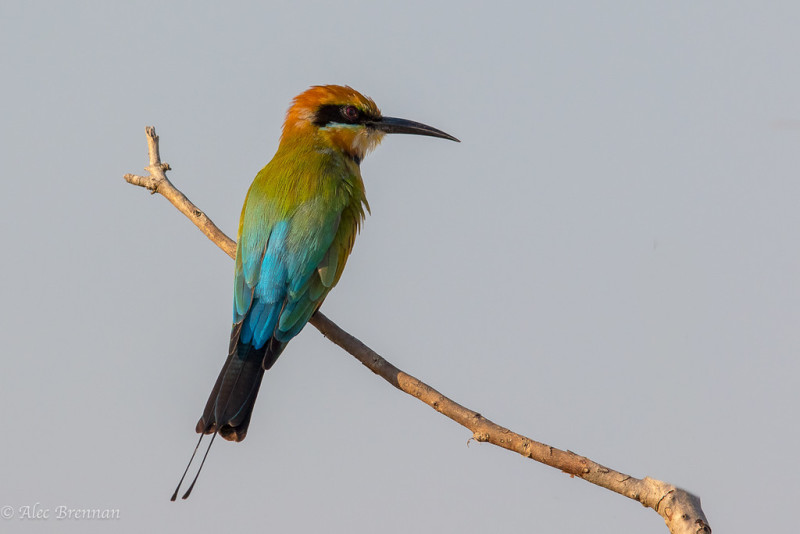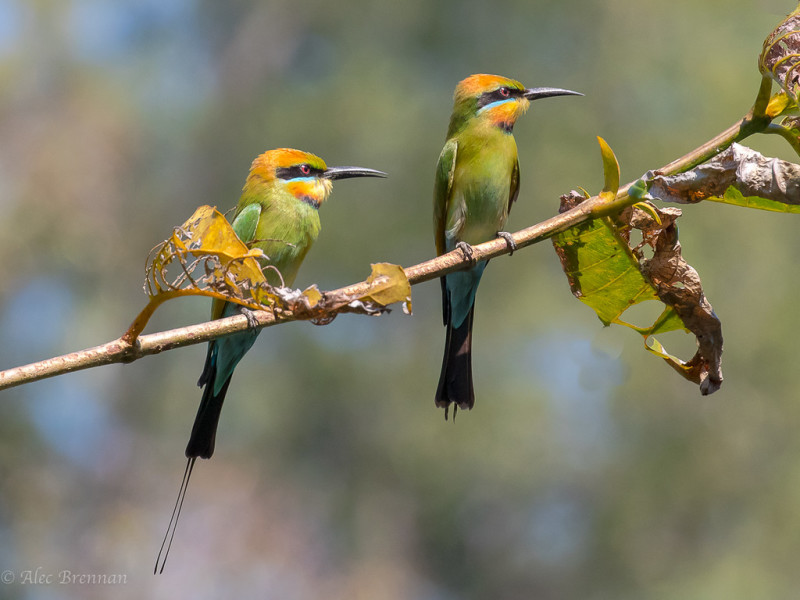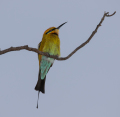Colours
Distinguishing features
The upper back and wings are green in color, and the lower back and under-tail coverts are bright blue. The undersides of the wings and primary flight feathers are red and tipped with black, and the tail is black to deep violet. The rainbow bee-eater's two central tail feathers are longer than the other tail feathers, and are longer in the male rainbow bee-eaters than in the females. The crown of the head, the stomach and breast, and the throat are pale yellowish in color, and the rainbow bee-eater has a black bib and a black stripe through its red eye.
Size
- From 19 cm to 28 cm (Including the long tail feathers)
Wingspan
- Wingspan data is not yet available.
Synonyms
Distribution
Distribution and habitat preferences
They are a common species and can be found during the summer in forested areas in most of southern Australia excluding Tasmania. They migrate north during the winter into northern Australia, New Guinea, and some of the southern islands of Indonesia.
They may be found in open woodlands, beaches, dunes, cliffs, mangroves, woodlands and they often visits parks and private gardens. (Wikipedia)
Diet
Rainbow bee-eaters mostly eat flying insects, but, as their name implies, they have a real taste for bees. Rainbow bee-eaters are always watching for flying insects, and can spot a potential meal up to 45 metres away. Once it spots an insect a bee-eater will swoop down from its perch and catch it in its long, slender, black bill and fly back to its perch. Bee-eaters will then knock their prey against their perch to subdue it. Even though rainbow bee-eaters are actually immune to the stings of bees and wasps, upon capturing a bee they will rub the insect's stinger against their perch to remove it, closing their eyes to avoid being squirted with poison from the ruptured poison sac. Bee-eaters can eat several hundred bees a day, so they are obviously resented by beekeepers, but their damage is generally balanced by their role in keeping pest insects such as locusts and hornets under control. (Wikipedia)







